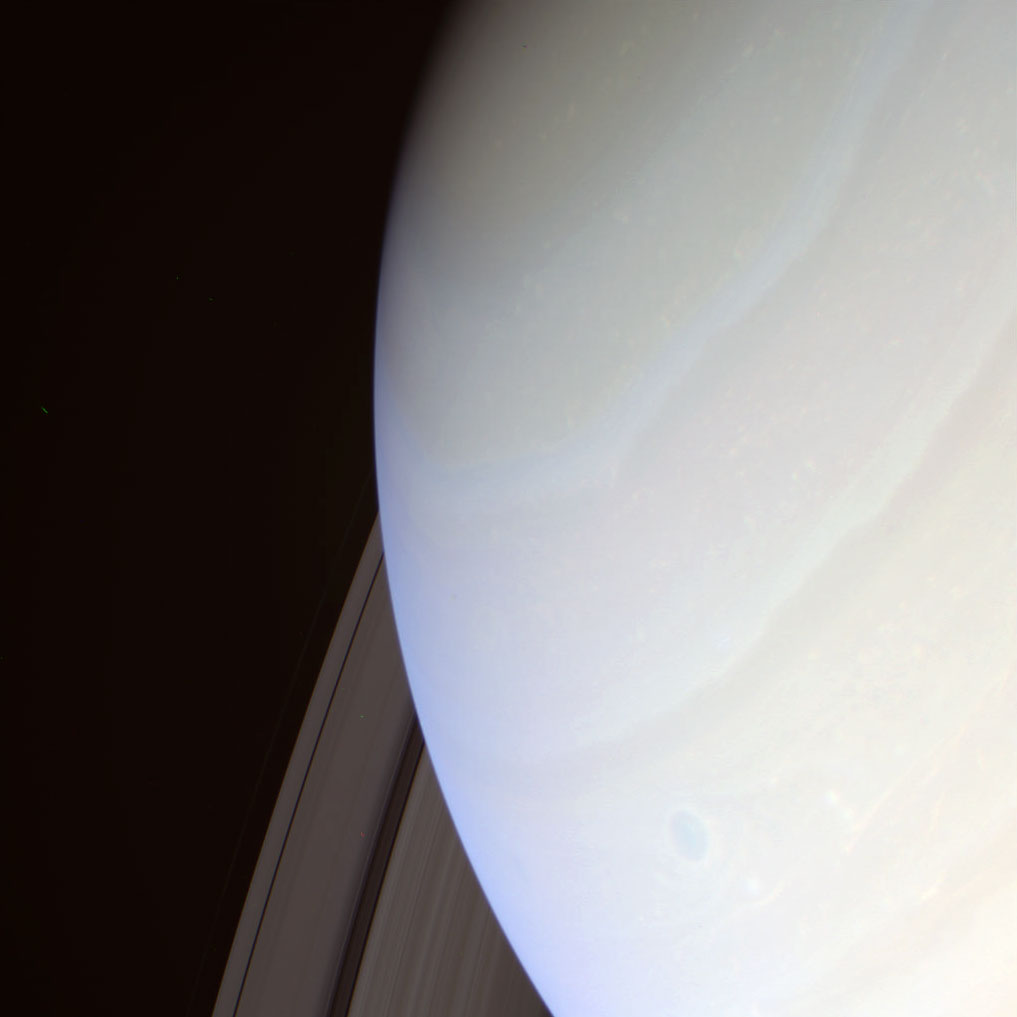 By the way… this is still the best Saturn image ever rendered.
By the way… this is still the best Saturn image ever rendered.
Wallpaper: Frosted Martian Sand Dunes
LDEF Fetish
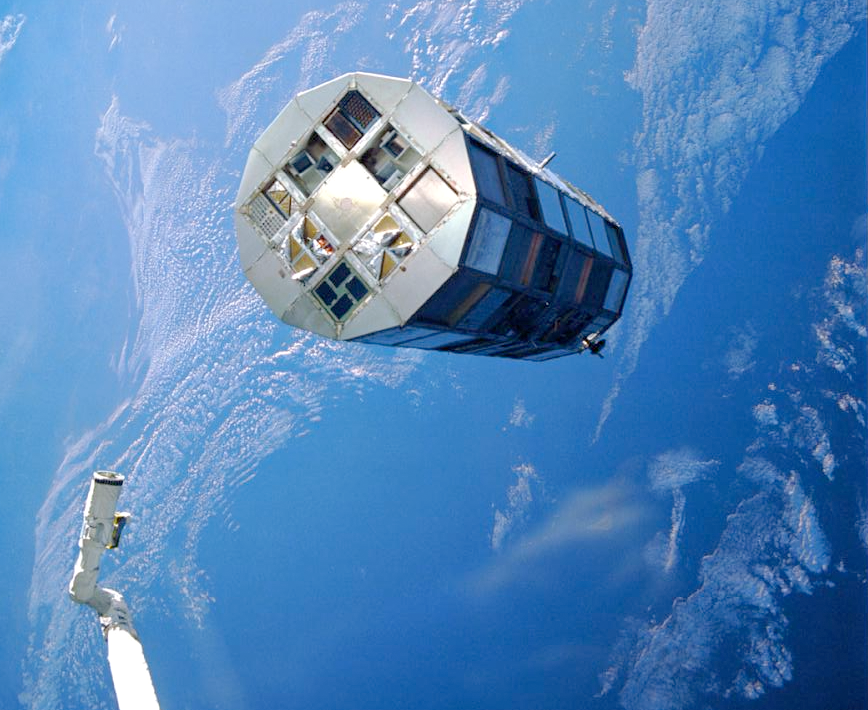 The LDEF was the Long Duration Exposure Facility (which I actually remember being released by the Shuttle in 1985) is essentially a drum of science experiments that was just to expose various materials and surfaces to the hostile environment of space. Couldn’t resist posting on this post from thenonist.com that displays a bunch of the individual panels of this thing as artwork.
The LDEF was the Long Duration Exposure Facility (which I actually remember being released by the Shuttle in 1985) is essentially a drum of science experiments that was just to expose various materials and surfaces to the hostile environment of space. Couldn’t resist posting on this post from thenonist.com that displays a bunch of the individual panels of this thing as artwork.
Wallpapers: The Martian Ganges Chasma
 The Ganges Chasma is a side canyon at one end of the vast Valles Marineris trough system of Mars. This image was returned by ESA’s Mars Express, brought to our attention by Bill Dunford’s Riding with Robots. The image above is a 2560x1800 wallpaper. Download the 1440x900 here.
The Ganges Chasma is a side canyon at one end of the vast Valles Marineris trough system of Mars. This image was returned by ESA’s Mars Express, brought to our attention by Bill Dunford’s Riding with Robots. The image above is a 2560x1800 wallpaper. Download the 1440x900 here.
Frozen Earth
 Don’t really post too many Terrestrial Earth images here becuase it is kind of cheating, but these iceberg images by Ajay Goyal are really nice and remind us of what an exotic planet our home really is. Imagine if these were images returned from a probe on a distant planet.
Don’t really post too many Terrestrial Earth images here becuase it is kind of cheating, but these iceberg images by Ajay Goyal are really nice and remind us of what an exotic planet our home really is. Imagine if these were images returned from a probe on a distant planet.
Visual Online Solar System
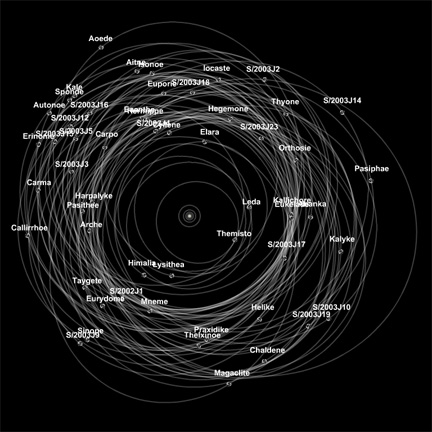 Simple yet informative online model of the solar system. I knew Jupiter had over 60 moons, but you don’t really visualize that until you see a model in action (seen above). The thing that really becomes clear is how many minor moons orbit WELL beyond the orbits of the major moons of the outer planets. It also provides models of some of the more well-known extrasolar planetary systems to the extent of bodies that we are currently aware of.
Simple yet informative online model of the solar system. I knew Jupiter had over 60 moons, but you don’t really visualize that until you see a model in action (seen above). The thing that really becomes clear is how many minor moons orbit WELL beyond the orbits of the major moons of the outer planets. It also provides models of some of the more well-known extrasolar planetary systems to the extent of bodies that we are currently aware of.
Intelligent Life in 20
 The image above shows what New Horizons looks like to the new Allen Telescope Array which has just come online this fall. The array is currently a collection of 42 antennas which will grow to around 350 over time and it will begin to scan the sky for signs of intelligent life like the one shown above. According to Seth Shostak of SETI, if you draw out some well respected formulas to their logical conclusions… you should be looking at mankind discovering evidence of intelligent life somewhere inside of 20 years from now.
The image above shows what New Horizons looks like to the new Allen Telescope Array which has just come online this fall. The array is currently a collection of 42 antennas which will grow to around 350 over time and it will begin to scan the sky for signs of intelligent life like the one shown above. According to Seth Shostak of SETI, if you draw out some well respected formulas to their logical conclusions… you should be looking at mankind discovering evidence of intelligent life somewhere inside of 20 years from now.
See the full article at Universe Today.
Phoenix’s Probable Last Surface Image
 On the Phoenix Mission’s 152nd Sol (a Martian day) the lander has fallen silent and mission engineers have been unable to communicate with it for over a week. This was expected as the Martian sunlight is less and less as the season changes. The sun is simply not providing enough energy to replenish its solar batteries. There is an outside chance that communications might resume again, but it would be a fleeting opportunity at best.
On the Phoenix Mission’s 152nd Sol (a Martian day) the lander has fallen silent and mission engineers have been unable to communicate with it for over a week. This was expected as the Martian sunlight is less and less as the season changes. The sun is simply not providing enough energy to replenish its solar batteries. There is an outside chance that communications might resume again, but it would be a fleeting opportunity at best.
In all, the mission prooved the existence of water-ice in the Martian subsurface; we saw (with our own eyes) Martian ice melting; it was the first time an atomic force microscope was used outside the bonds of Earth; the discovery that Martian soil may not be that different from the Earth’s and that growing plants in it may not be at all difficult; Phoenix found trace amounts of salt which could be nutrients for life; and finally calcium carbonate which suggests a past existence of liquid water on the surface of an anchient Mars.
And who could forget this image. Not too shabby.
Modern Art
At Closest Approach
 Sorry for the delay on this one… its remarkably similar to the last close approach images from August. This image, taken from 1,691 kilometers, also shows the areas surrounding the plume sources to be boulder strewn which suggests that occasionally some large sized chunks of internal Enceladus are ejected from within.
Sorry for the delay on this one… its remarkably similar to the last close approach images from August. This image, taken from 1,691 kilometers, also shows the areas surrounding the plume sources to be boulder strewn which suggests that occasionally some large sized chunks of internal Enceladus are ejected from within.
This approach and the previous only weeks ago are to be combined as a double research header. This encounter was largely for hi-res imaging while the previous was to “sniff” out the chemical composition of those plumes. The next close encounter (like this) for Enceladus will not be for another year, so lets hope these two encounters give us a clearer picture of what is actually happening inside this small wonder.
Check out this massive composite of the encounter released by JPL:
On the Way to Enceladus
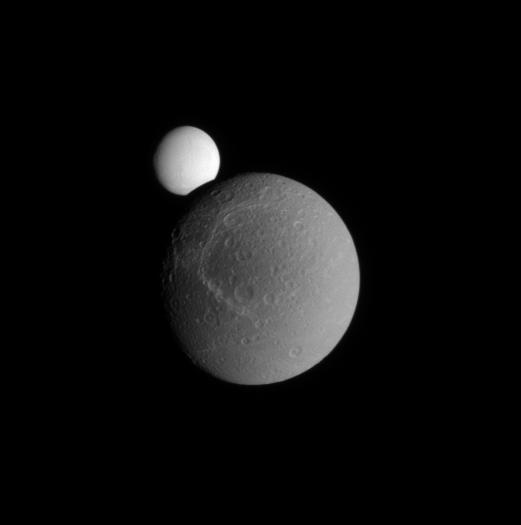 There was another up-close buzz over the plumes of Enceladus yesterday. Apparently the science team has been mum about the previous close shave a few weeks ago because they want to do a combined press release on both encounters.
There was another up-close buzz over the plumes of Enceladus yesterday. Apparently the science team has been mum about the previous close shave a few weeks ago because they want to do a combined press release on both encounters.
The above image taken Oct 28, is a real nice warm up shot taken on its way to the encounter with Dione in the foreground.
Rhea Under Rings
Dramatic Saturn
Roving Mars
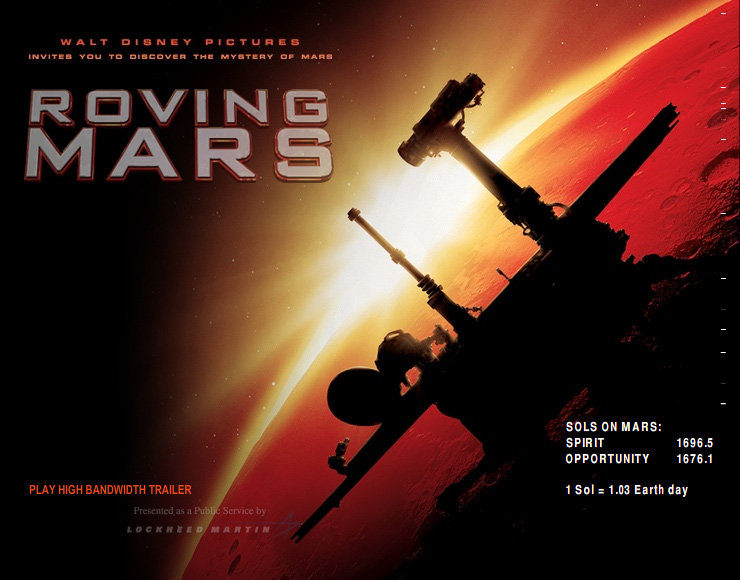 How do I not see these things? This was from back in 2006. I don’t recall ever hearing of this. It is an IMAX on the two Mars rover missions Spirit and Opportunity. Coincidentally, Paul Newman who passed recently apparently had something to do with it as well. I assume narration.
How do I not see these things? This was from back in 2006. I don’t recall ever hearing of this. It is an IMAX on the two Mars rover missions Spirit and Opportunity. Coincidentally, Paul Newman who passed recently apparently had something to do with it as well. I assume narration.
Saturn Followed by a Moonshadow
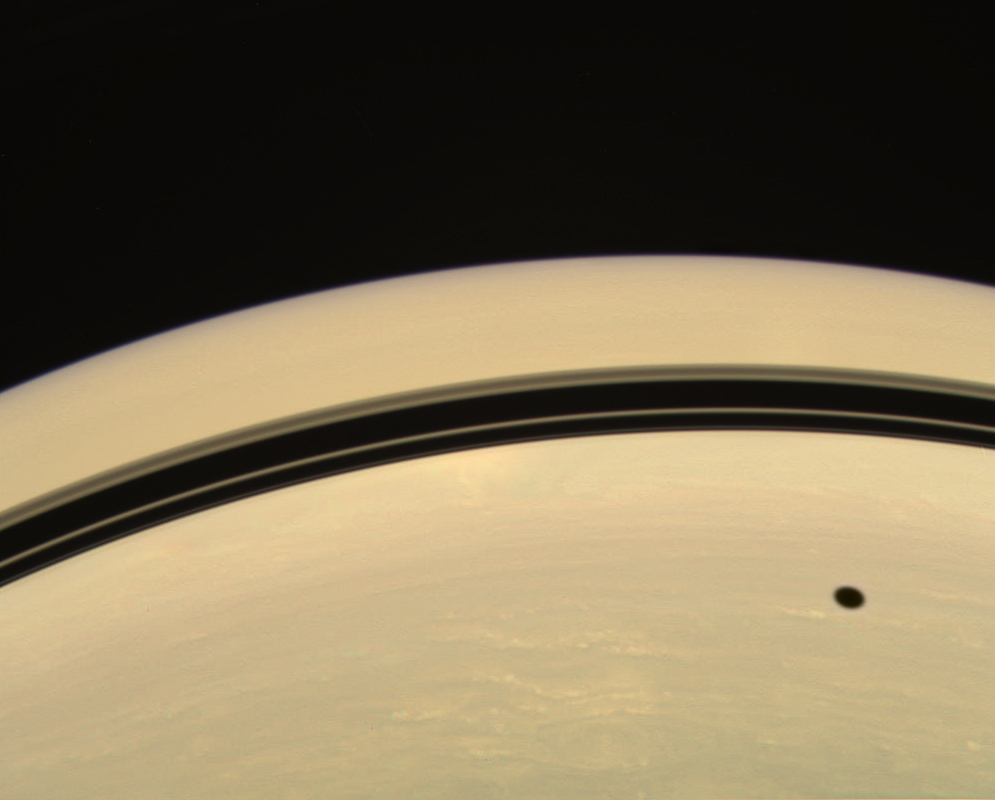 Another Gordan Ugarkovic beauty.
Another Gordan Ugarkovic beauty.
Enceladus From Oct 10 Encounter
Update: IMAX in a Basement
 Its been a while since I have updated the progress on IMAX in a Basement, which features imagery from the Cassini mission. See youTube for a nice “Problems Solved” video that includes a sweet sweep across what looks like Enceladus toward Saturn.
Its been a while since I have updated the progress on IMAX in a Basement, which features imagery from the Cassini mission. See youTube for a nice “Problems Solved” video that includes a sweet sweep across what looks like Enceladus toward Saturn.
Messenger Mercury Part 1 and 2
 Image by Gordan Ugarkovic. The top RGB (red/green/blue) pair is from the first flyby in January while the lower is from the second flyby from this week. The color in the latter is artistic based upon the color information provided in January’s encounter.
Image by Gordan Ugarkovic. The top RGB (red/green/blue) pair is from the first flyby in January while the lower is from the second flyby from this week. The color in the latter is artistic based upon the color information provided in January’s encounter.
Time for an update to the Mercury Portrait wallpaper me thinks.
Another Enceladus Pass: To Come Within 25km!
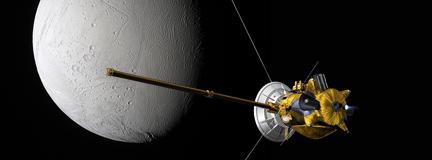 Tomorrow’s Cassini buzz of Enceladus is closer than ever not only at Enceladus, but at any other body in the Saturnian system. It is to come only 25km from the surface. It is to fly deep into the plumes, but this visit is more about smell than vision. Imagery is not expected to be as impressive as August’s pass despite the close proximity due to the spacecraft‘s instruments concentrating on particles and dust analysis and not pretty pictures.
Tomorrow’s Cassini buzz of Enceladus is closer than ever not only at Enceladus, but at any other body in the Saturnian system. It is to come only 25km from the surface. It is to fly deep into the plumes, but this visit is more about smell than vision. Imagery is not expected to be as impressive as August’s pass despite the close proximity due to the spacecraft‘s instruments concentrating on particles and dust analysis and not pretty pictures.
Mercury As You Have Never Seen It
 “most of the terrain east of Kuiper, toward the limb (edge) of the planet, the departing images are the first spacecraft views of that portion of Mercury’s surface. A striking characteristic of this newly imaged area is the large pattern of rays that extend from the northern region of Mercury to regions south of Kuiper.”
“most of the terrain east of Kuiper, toward the limb (edge) of the planet, the departing images are the first spacecraft views of that portion of Mercury’s surface. A striking characteristic of this newly imaged area is the large pattern of rays that extend from the northern region of Mercury to regions south of Kuiper.”
From the Official Messenger site.






